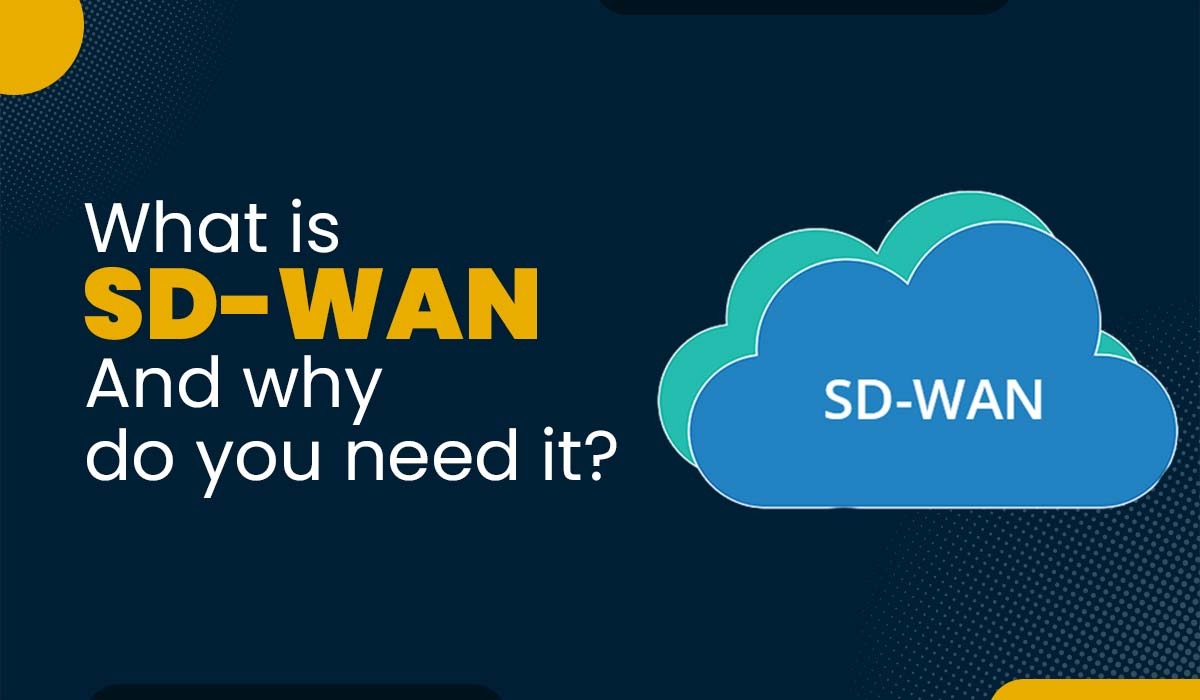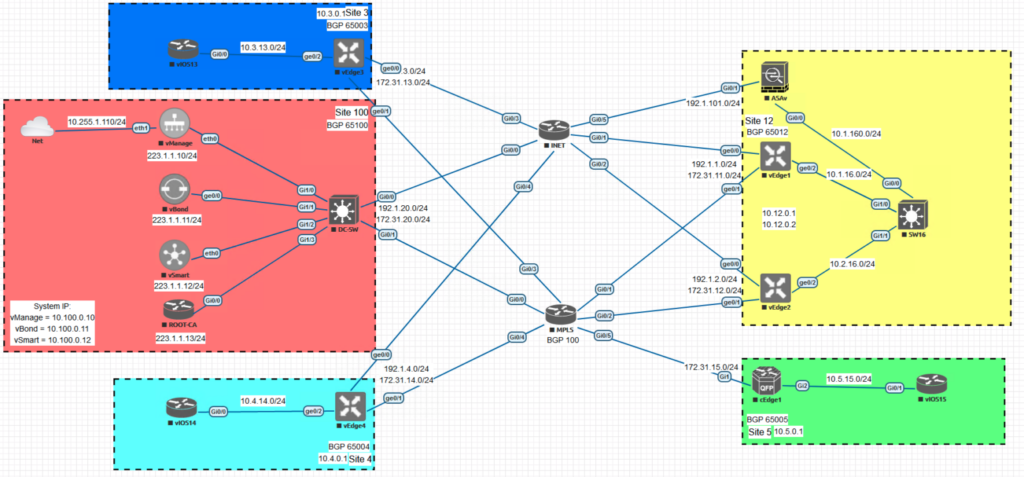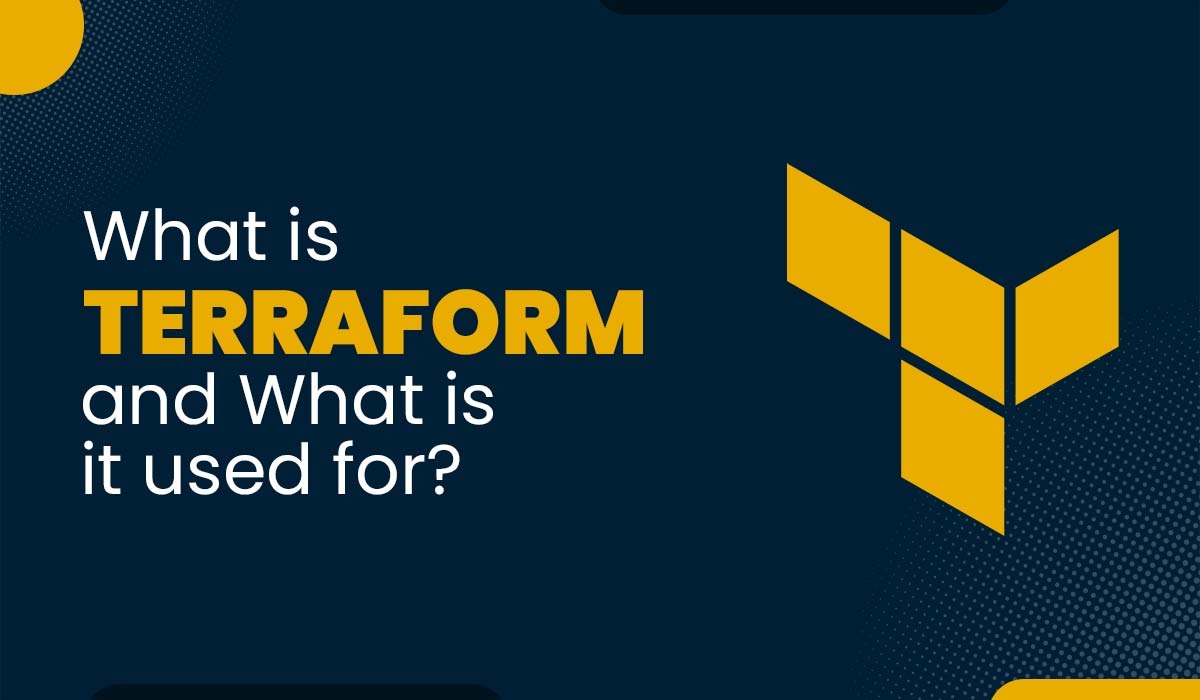What is SD-WAN?

When the networking giant Cisco introduced Implementing Cisco SD-WAN Solutions (ENSDWI 300-415), aka Cisco SD-WAN, as one of its concentration certification exams under enterprise track, it became a buzzword in the networking industry. Everyone was curious to learn what is SD WAN? How does SD-WAN work? What are the benefits of SD-WAN? Is it going to replace MPLS (Multiprotocol Label Switching), the traditional data forwarding technique that increases speed and controls network traffic flow? Moreover, enterprises were curious to implement and deploy it into their networks. That is why the need for Network engineers with SD-WAN skills increased and hence the need for SD-WAN training also became high. In this blog, we will discover what is SD WAN, how does SD-WAN work, and what are its benefits? Let’s begin. The full form of SD-WAN is Software-defined Wide Area Network. A model that is based out of SDN (Software-Defined Networking). SDN is the networking architecture that separates the network’s control plane from the forwarding plane (Data Plane), where a control plane controls several devices. The SD-WAN technology is greatly beneficial for large-scale enterprises with global networks as it eliminates the need to carry out an individual gateway and router provisioning. This networking model has brought a significant shift in the way WANs are implemented, making the management and operation of WAN simpler. With SD WAN architecture deployed to the network, companies become free from proprietary hardware and leasing costly data lines and DSL. Also, SD WAN routes data safely to branch sites using broadband Internet and cloud services, which are low-cost and widely available. One of the best reasons to adopt SD WAN from traditional router-centric WAN architecture is its model fully supports applications hosted on-premises data centers, public or private clouds, and SaaS services like Dropbox, Microsoft 365, and more. Also, the freedom to use any combination of transport services like MPLS allows SD WAN users to connect to applications securely. You may also like – Traditional WAN vs SD-WAN In contrast to the conventional router-centric WAN architecture, the SD-WAN model is created to provide the highest levels of application performance while fully supporting applications hosted in on-premises data centres, public or private clouds, and SaaS services like Workday, Dropbox, Microsoft 365, etc. SD-WAN is based on the SDN technology which separates the Data plane from the control plane. The SD-WAN makes managing networks very easy, reliable and cost effective. As SD-WAN has different data plane and control plane, it is equipped with a centralized control function. This function is used to intelligently and securely direct traffic across the WAN. Each class of users gets the suitable QoS and security strategy authorization, all as per business needs. Secure nearby web breakout of IaaS and SaaS application traffic from the branch gives the most significant levels of cloud execution while shielding the endeavour from threats. The Cisco SD-WAN Architecture is broken up in 4 components which are – These are the 4 components of SD-WAN. To businesses where traditional WANs are used to cause traffic delays and impair application performance, SD-WAN and its centralized control function securely and intelligently direct traffic across the WAN and directly to trusted SaaS and IaaS providers. They increase application performance and deliver a high-quality user experience that improves business productivity and agility and reduces IT costs. Some of SD-WAN benefits for businesses are listed here: SD-WAN relies on software overlay rather than physical routers to provide more efficient WAN bandwidth utilization by means of dynamic path selection. It prioritizes pathing for high-demand applications like video conferencing or Voice over Internet Protocol (VoIP) over other minimal usages. Users can see performance improvements as the bandwidth is being allocated where it can make the most significant impact at any given time. 2. Easy to configure and quick to deploy: Deploying SD-WAN is easy as it is controlled through a software platform rather than hardware, with a user-friendly interface that simplifies the process. Even the implementation of many SD-WAN solutions is possible by non-technical staff. Moreover, the configuration is quick; you can get to a new location in a matter of days, not weeks, and it benefits growing businesses the most. Also, SD-WAN can be deployed over the businesses’ existing network technology and infrastructure and make them work more efficiently. This reduces the load from your IT team, and you get a flexible and scalable network delivering secure and fast connections. 3. Customize your Network: SD-WAN is configured keeping the organization’s specific needs in mind. You can increase or decrease the bandwidth-on-demand, route the traffic of high-demand applications through the fastest and most reliable connection, and more. 4. Better Security: SD-WAN offers end-to-end encryption throughout the network. Also, segmentation helps you respond quickly to security breaches or damage. With SD-WAN, account creation, editing, and removal are quick and straightforward as multiple user accounts can also be a major threat vector for corporate networks. 5. Reliable connection: With SD-WAN, you can implement Forward Error Correction (FEC) and compensate for the packet loss that usually occurs during VoIP because of clipped words and stuttering connections. 6. Cost-effective networking solution: SD-WAN is known for its cost-effectiveness. No matter what network connection you have, whether it’s MPLS, Ethernet, Wi-Fi, or anything else, with minimal IT involvement, you can deploy, configure SD-WAN and save your time and money. SD-WAN will make use of whatever you already have and offer improved performance, reliability, and security and help you keep pace with your business while reducing overhead and equipment spending. So, SD-WAN is a networking solution and a security solution in a single appliance that organizations can use to the network edge. You should also check out – Is SD-WAN worth it in 2023? Reading about SD-WAN and its benefit to securely connect users to applications sounds familiar. Yes, that’s precisely what VPN does. So, most of the time people get confused between SD-WAN and VPN. So, here is a comparison that you might find interesting. Also, there are many more benefits of using SD-WAN solutions, importantly to business, as they are designed to move network routing and security functionality to the edge. The networking giant Cisco upgraded its certification tracks in 2020 and covered designing, deploying, configuring, and managing the Cisco SD-WAN solution in a large-scale live network within ENSDWI 300-415 certification exam. This is one of the concentration exams under the enterprise track passing which validate your skills to design, deploy, configure, and manage Cisco SD-WAN solutions. You might also like – Why one must join PyNet Labs for Cisco SD-WAN training. SD-WAN is used to optimize and streamline the management of wide area networks. It provides enhanced control, visibility, and security for network traffic, allowing organizations to efficiently connect and manage multiple branch locations, improve application performance, and reduce costs by leveraging various transport options like MPLS, broadband internet, and LTE. SD-WAN, in simple terms, is a technology that simplifies and improves the way wide area networks (WANs) are managed. It allows organizations to connect and control their network infrastructure more efficiently, optimize application performance, and enhance security by using software-defined techniques and multiple network connections. The main difference between WAN and SD-WAN is that a traditional WAN is typically a hardware-based network infrastructure connecting multiple locations, while SD-WAN is a software-driven approach that abstracts the underlying network and provides centralized management, automation, and optimization of network traffic using software-defined techniques. SD-WAN offers several advantages over MPLS due to its flexibility, cost-effectiveness, and improved performance. It allows organizations to leverage multiple transport options, including broadband internet, while providing dynamic traffic routing, centralized management, and enhanced application performance, making it a more adaptable and efficient solution compared to MPLS. In this blog, we have discussed What is SD WAN, how does SD-WAN works, and its benefits. In conclusion, SD-WAN (Software-Defined Wide Area Networking) is revolutionizing the way organizations manage their wide area networks. With its software-driven approach, SD-WAN offers centralized control, dynamic traffic routing, and enhanced performance. It provides flexibility, cost savings, and simplified network administration compared to traditional networking solutions.Introduction
What is SD WAN?
SD-WAN Architecture

How does SD-WAN work?
Components of SD-WAN
What are the benefits of SD-WAN?
SD-WAN vs VPN
Which Cisco certification covers SD-WAN Deployment Skills?
Frequently Asked Questions
Q1 – What is SD-WAN used for?
Q2 – What is SD-WAN in simple terms?
Q3 – What is difference between WAN and SD-WAN?
Q4 – Why is SD-WAN better than MPLS?
Conclusion







